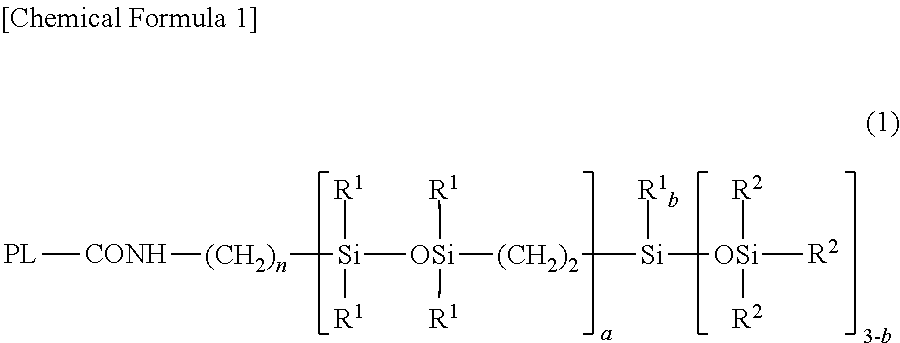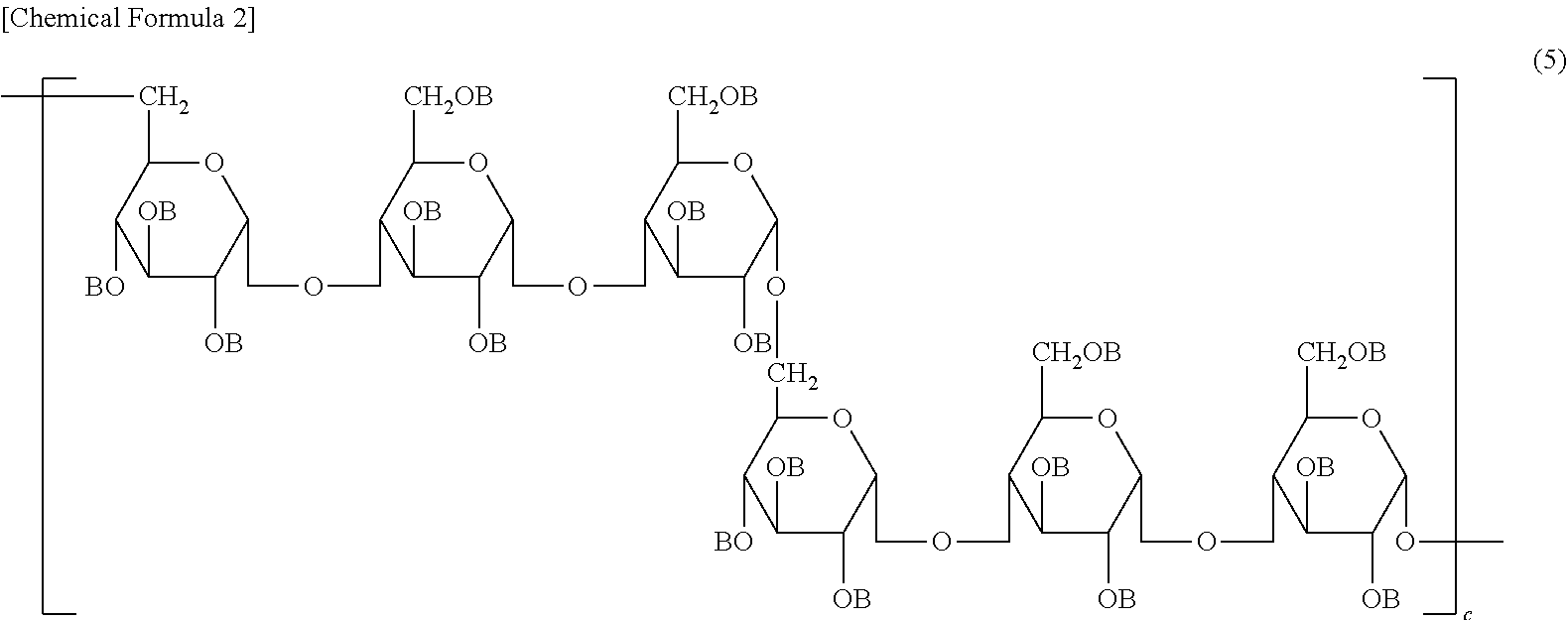Oil-based thickening agent, oil-based thickening composition, and cosmetic preparation
a technology of oil-based thickening composition and oil-based thickening agent, which is applied in the field of oil-based thickening agent, can solve the problems of inadequate thickening effect, limited silicone oil thickening effect, and low thickening effect of silicone oil, so as to achieve pleasant use, improve thickening effect, and improve the effect of silicone oil
- Summary
- Abstract
- Description
- Claims
- Application Information
AI Technical Summary
Benefits of technology
Problems solved by technology
Method used
Image
Examples
examples
[0047]Working Examples, Comparative Examples and example formulations are given below to more concretely illustrate the invention, although the invention is not limited by these Examples. Unless noted otherwise, the formulated amounts are indicated in % (wt %). The test methods used in the invention were as follows.
(1) Viscosity
[0048]Samples having a viscosity of less than 1,000 mPa·s were measured with a Brookfield rotary viscometer (TV-10 viscometer (Toki Sangyo Co., Ltd.), rotor No. 2; speed, 60 rpm).
[0049]Samples having a viscosity of from 1,000 to 100,000 mPa·s were measured with a Brookfield rotary viscometer (TV10 viscometer (Toki Sangyo Co., Ltd.), rotor No. 4; speed, 6 rpm).
[0050]Samples having a viscosity of more than 100,000 mPa·s were measured with a Brookfield rotary viscometer (RVDV-III Ultra viscometer (Brookfield Engineering), spindle T-F; speed, 6 rpm).
(2) Appearance
[0051]The sample was visually examined at room temperature (25° C.) and judged to be a solid when in ...
experiment 2
Influence of Mixing Ratio
[0060]Aside from changing the mixing ratio of Silicone Emulsifying Agent (1) and Silicone-Modified Polysaccharide Compound (1), this investigation was carried out in the same way as in Experiment 1.
TABLE 2ComparativeComparativeExample 1Example 3Example 4Example 1Example 5Example 2Composition (%)Silicone Emulsifying Agent (1)15129630Silicone-Modified03691215Polysaccharide Compound (1)Decamethylcyclopentasiloxane858585858585Oil-based thickening agent15concentration (%) in compositionEvaluation ResultsViscosity (mPa · s)14.51,9009,40010,3003,000203.4Appearanceliquidliquidliquidliquidliquidliquid
[0061]As shown in Table 2, oil-based thickening agents according to the invention which used two ingredients (Examples 1 and 3 to 5) had a synergistically improved viscosity over a broad range in mixing ratio.
experiment 3
Type of Silicone Emulsifying Agent
[0062]This investigation was carried out in the same way as Experiment 1, but using silicone emulsifying agents of different structures.
[0063]The new materials used were as follows.
Silicone Emulsifying Agent (2):
[0064]PEG-10 Dimethicone[0065](KF-6017, from Shin-Etsu Chemical Co., Ltd.)
Silicone Emulsifying Agent (3):
[0066]A mixture of about 24% of Dimethicone / (PEG-10 / 15) Crosspolymer and about 76% of Methyl Polysiloxane (6 mm2 / s) (KSG-210, from Shin-Etsu Chemical Co., Ltd.)
[0067]The results are shown in Table 3.
TABLE 3ComparativeComparativeComparativeExample 5Example 6Example 6Example 7Example 7Example 8Composition (%)Silicone Emulsifying Agent (2)156——3012Silicone Emulsifying Agent (3)——62.51) 252)——Silicone-Modified090 9018Polysaccharide Compound (1)Decamethylcyclopentasiloxane858537.5667070Oil-based thickening agent1530concentration (%) in compositionEvaluation ResultsViscosity (mPa · s)13.33,4002,800104,000 48.650,300Appearanceliquidliquidliqui...
PUM
| Property | Measurement | Unit |
|---|---|---|
| viscosity | aaaaa | aaaaa |
| viscosity | aaaaa | aaaaa |
| viscosity | aaaaa | aaaaa |
Abstract
Description
Claims
Application Information
 Login to View More
Login to View More - R&D
- Intellectual Property
- Life Sciences
- Materials
- Tech Scout
- Unparalleled Data Quality
- Higher Quality Content
- 60% Fewer Hallucinations
Browse by: Latest US Patents, China's latest patents, Technical Efficacy Thesaurus, Application Domain, Technology Topic, Popular Technical Reports.
© 2025 PatSnap. All rights reserved.Legal|Privacy policy|Modern Slavery Act Transparency Statement|Sitemap|About US| Contact US: help@patsnap.com



